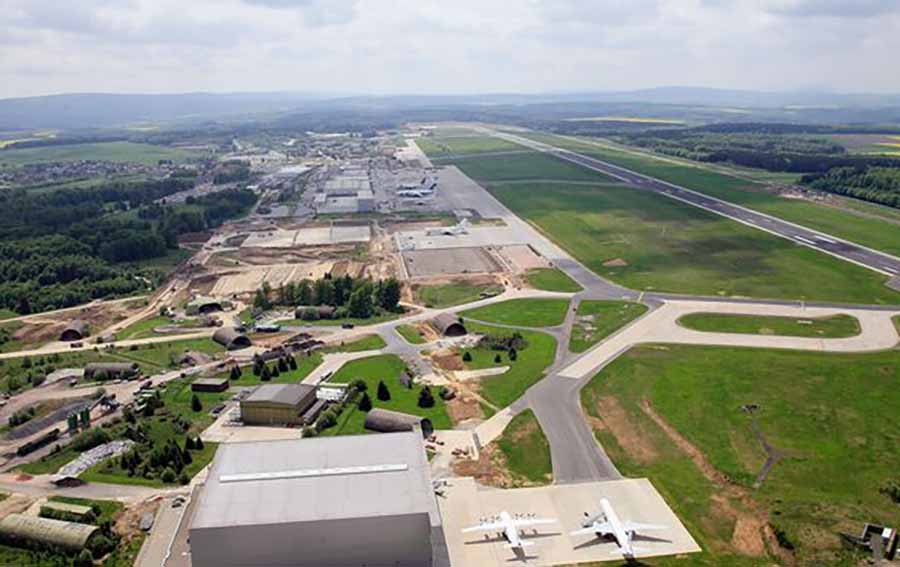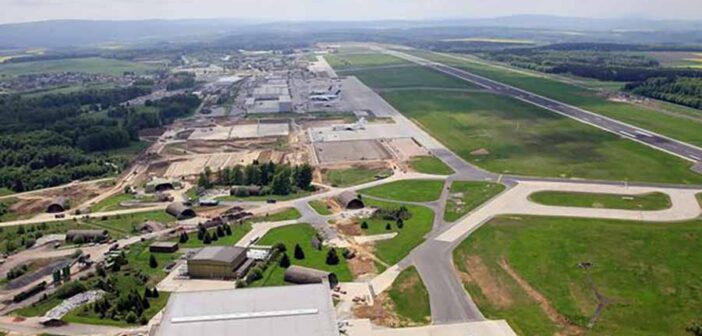
Frankfurt-Hahn Airport, located in Rhineland-Palatinate, Germany, 10 kilometres from Kirchberg and 120 kilometres west of Frankfurt, serves as a key hub for low-cost carriers like Ryanair and Wizz Air, connecting to 46 destinations across Europe, including London, Barcelona, and Porto. Handling around 1.4 million passengers annually, this compact airport, also a cargo hub with a 24-hour operating licence, offers a practical experience for travellers exploring the Rhine Valley or seeking budget-friendly flights. Its single-terminal design and straightforward amenities ensure a manageable journey.
The passenger experience at Frankfurt-Hahn is efficient, though its smaller size can lead to congestion. The terminal, divided into areas A and B, handles all operations, with passengers often walking from the aircraft across the tarmac to reach arrivals. Thirteen check-in counters and self-service kiosks facilitate check-in, but kiosks can take 10–15 seconds to load, and some travellers report slow service during peak times.
Security screening requires liquids in a 1-litre plastic bag and electronics removed, with queues occasionally reaching 30–45 minutes due to limited staffing or strict checks. Staff are generally helpful, and a free assistance service for passengers with reduced mobility, bookable 48 hours in advance, provides support via wheelchair services and accessible pathways. The absence of a transit area means connecting passengers must clear security again, but clear signage aids navigation.
Accessing the airport requires planning due to its distance from major cities. The A1 and A61 motorways connect to the B50, leading to the airport in about 1.5 hours from Frankfurt or Luxembourg. The Flibco shuttle bus, known as the Ryanair bus, is the primary public transport, running 20 times daily from Frankfurt Hauptbahnhof to Hahn in 2 hours 10 minutes for €18.99, with stops at Frankfurt Main Airport and sometimes Mainz or Simmern. Bus timetables align with Ryanair and Wizz Air flights, and online tickets ensure seats even if flights are delayed.
Taxis cost €100–€150 to Frankfurt, making them less practical, while car hire desks from Avis, Europcar, and Hertz are in the terminal, with parking at €3 per hour or €0.45/kWh for electric vehicle charging in the PD car park, 150 metres from the terminal. Public transport options are limited after midnight, so late arrivals may need taxis or pre-booked shuttles. Traffic on the B50 can slow journeys, so extra time is advised.
The airport’s layout is compact, with a two-floor terminal housing 12 gates and a 3,800-metre runway, one of Germany’s longest, supporting large cargo aircraft like the Antonov An-124. The departure hall, adjacent to the apron, allows quick access to gates, all within a five-minute walk from security. Digital flight information screens provide updates, but the lack of tannoy announcements requires passengers to check monitors frequently. Seating is limited, particularly during peak summer and holiday periods, and some areas feel outdated, though the terminal operates 24 hours. A visitor terrace, open from 8:30 am. to 10 pm offers views of the apron.
Delays can occur, particularly during summer and holiday seasons, with average delays of 15–30 minutes reported due to understaffing, slow security checks, or low-visibility conditions like fog, common in autumn and winter. On-time performance is generally reliable for Ryanair, which operates 143 weekly connections, but travellers should arrive three hours early for international flights to account for potential queues. Checking flight status via www.hahn-airport.de or Flightradar24 is recommended.
Dining and retail options are modest but sufficient. The departure hall features a McDonald’s, Simit Sarayı for Turkish cuisine, and Burger King, open from 6 am. to 10 pm alongside vending machines for snacks. A Heinemann Duty-Free shop and a Relay newsstand offer travel essentials and souvenirs, though some shelves may be sparsely stocked. Hours are limited, and options for special dietary needs are minimal, so passengers may need to plan ahead. A lounge provides refreshments and Wi-Fi for a fee, offering a quieter space.
Facilities meet basic needs. Free Wi-Fi via AirIT is available for one hour, with spotty connectivity in some areas, and a premium option costs €2. ATMs are located in departures, but currency exchange is unavailable, so travellers should exchange money in nearby cities. Baby-changing facilities are in women’s restrooms, and a first aid station is accessible in emergencies via 112. Luggage storage costs €3–€5 per hour in the parking area, and a service centre handles lost-and-found, copying, and fax services. Accessible parking and restrooms support passengers with disabilities, though Flibco buses lack wheelchair ramps, requiring an accompanying person for mobility-challenged travellers.
Connections are limited due to the absence of a transit area, requiring all passengers to clear security and immigration. The minimum connection time is 35 minutes, but self-transfers can take over an hour, so a two-hour buffer is advised. Popular routes to London, Bucharest, and Sofia are frequent, but delays from staffing shortages or weather can disrupt tight schedules. The airport’s focus on low-cost point-to-point flights means most passengers are not connecting.
Frankfurt-Hahn Airport offers a practical and budget-friendly experience, with its compact size and affordable transport options making it a convenient choice for cost-conscious travellers. Despite its distance from Frankfurt, its efficient operations and essential amenities ensure a smooth journey to Europe’s popular destinations.
Ryanair
Ryanair operates flights to Dublin on Mondays, Wednesdays, Thursdays, Fridays, and Saturdays. Note that Hahn is a secondary airport, 102 km from Frankfurt. Ryanair check-in is in terminal 1, check-in hall (dynamic desks 1-13; self-service kiosks available). Exact desk numbers are displayed on airport screens. Bag drop opens 2 hours prior.
Flights to Ireland (Dublin) typically depart from gates 1–6. Gates are assigned dynamically and shown on departure boards.




